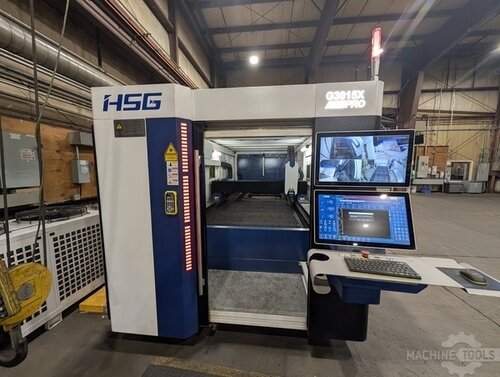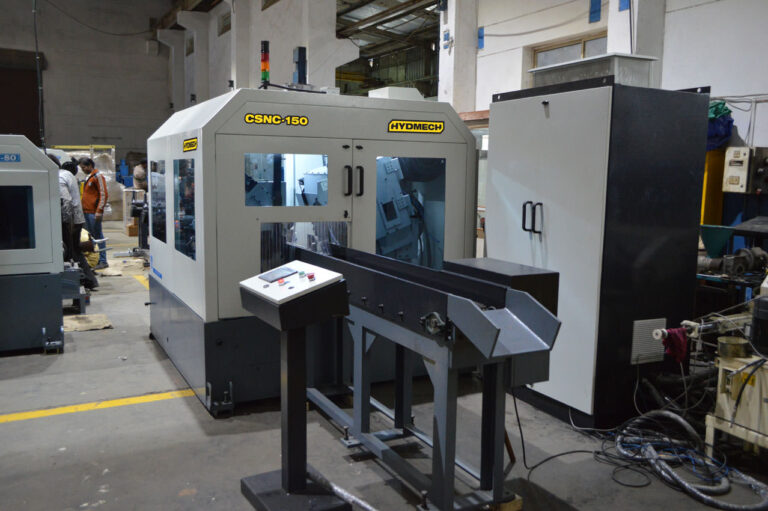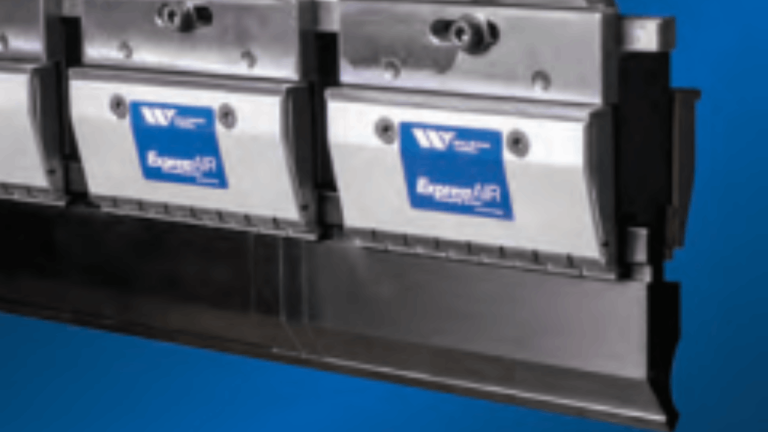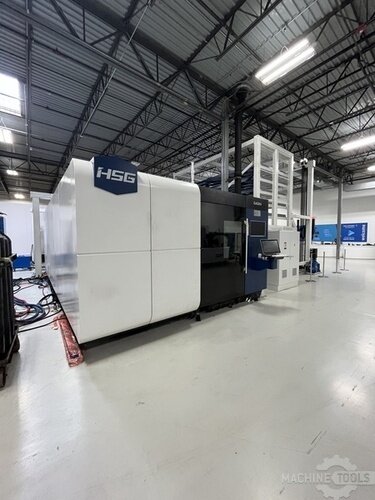In the ever-evolving landscape of structural steel fabrication, staying ahead of the curve is crucial for maintaining competitiveness and profitability. As the VP of Sales at Mac-Tech, I have witnessed firsthand the transformative power of automation in this industry. Today, I want to share insights on how the Prodevco PCR-42 Robotic Beam Coper can significantly boost your return on investment (ROI) by enhancing productivity, reducing labor costs, and ultimately driving profitability. Here will delve into the role of automation, a compelling case study, methods for calculating ROI, and best practices for implementing automation technologies.
The Role of Automation in Steel Fabrication
Automation has become a cornerstone in the structural steel fabrication industry, addressing numerous challenges that have long plagued the sector. One of the most significant bottlenecks is material handling, which can be both time-consuming and labor-intensive. By integrating advanced machinery like the Prodevco PCR-42, businesses can streamline these processes, leading to substantial efficiency gains. Automation not only speeds up production but also ensures precision and consistency, which are critical in maintaining high-quality standards.
Moreover, the increasing complexity of modern construction projects demands a level of precision that manual processes often struggle to achieve. The PCR-42, with its robotic capabilities, can handle intricate cuts and copes with unparalleled accuracy. This level of precision reduces the need for rework, thereby saving time and material costs. In an industry where margins can be thin, these savings are crucial for maintaining profitability.
Finally, automation addresses the growing labor shortage in the steel fabrication industry. Skilled labor is becoming increasingly scarce, and training new employees can be both costly and time-consuming. The PCR-42 mitigates this issue by performing tasks that would otherwise require highly skilled workers. This not only reduces labor costs but also allows existing employees to focus on more strategic, value-added activities.
Case Study: PCR-42’s Impact on Productivity
A compelling example of the PCR-42’s impact can be seen in our recent project with a client in Northeast Indiana. Before implementing the PCR-42, the client’s fabrication process was labor-intensive and time-consuming, taking up to 108 hours to complete a single project. After integrating the PCR-42, the same project was completed in just 8 hours. This dramatic reduction in fabrication time was achieved through the machine’s advanced automation capabilities, which streamlined material handling and cutting processes.
The benefits realized by our Northeast Indiana client were multifaceted. Not only did they see a significant reduction in labor costs, but they also experienced an increase in overall productivity. The PCR-42’s precision reduced the need for rework, further saving time and resources. Additionally, the client reported improved employee satisfaction, as the machine took over the more monotonous and physically demanding tasks, allowing their workforce to engage in more meaningful and less strenuous activities.
This case study underscores the transformative potential of the PCR-42 in the structural steel fabrication industry. By drastically reducing fabrication time and labor costs, the machine provided our client with a competitive edge, enabling them to take on more projects and increase their profitability. This real-world example highlights the tangible benefits of investing in advanced automation technologies.
AFD Plate Drilling Machines
Calculating ROI for Automation Investments
When considering an investment in automation, it’s crucial to assess the potential return on investment (ROI) to ensure it aligns with your business goals. The first step in this process is to quantify the direct and indirect costs associated with your current fabrication processes. This includes labor costs, material waste, and the time required to complete projects. By comparing these costs to the efficiencies gained through automation, you can begin to see the financial benefits.
Next, consider the long-term financial gains. Automation equipment like the PCR-42 not only reduces immediate labor costs but also enhances productivity and precision, leading to fewer errors and less rework. These improvements can significantly impact your bottom line over time. Additionally, the ability to complete projects faster allows you to take on more work, further increasing your revenue potential.
Finally, it’s essential to factor in the intangible benefits of automation, such as improved employee satisfaction and reduced turnover. A happier, more engaged workforce is more productive and less likely to leave, saving you the costs associated with hiring and training new employees. By taking a holistic approach to calculating ROI, you can make a more informed decision about investing in automation technologies like the PCR-42.
Best Practices for Implementing Automation Technologies
Successfully implementing automation technologies requires careful planning and execution. The first step is to conduct a thorough assessment of your current processes to identify areas where automation can have the most significant impact. This involves not only evaluating your material handling and fabrication processes but also considering the skills and capabilities of your workforce.
Once you’ve identified the areas for improvement, it’s crucial to choose the right equipment and partner with a reputable supplier. At Mac-Tech, we pride ourselves on our consultative approach, working closely with our clients to understand their unique needs and recommend the best solutions. The PCR-42, for example, is an excellent choice for businesses looking to enhance their structural steel fabrication processes due to its advanced capabilities and proven track record.
Finally, successful implementation doesn’t end with the installation of the equipment. Ongoing training and support are vital to ensure your team can fully leverage the new technology. At Mac-Tech, we offer comprehensive training programs and continuous support to help our clients maximize the benefits of their automation investments. By following these best practices, you can ensure a smooth transition to automation and achieve significant improvements in your operations.
FAQ
What is the Prodevco PCR-42?
The Prodevco PCR-42 is a robotic beam coper designed to automate the cutting and coping processes in structural steel fabrication, significantly enhancing productivity and precision.
How does the PCR-42 improve productivity?
The PCR-42 automates material handling and cutting processes, reducing fabrication time from hours to minutes and minimizing the need for rework due to its high precision.
What are the long-term financial benefits of investing in the PCR-42?
Investing in the PCR-42 can lead to substantial long-term financial benefits, including reduced labor costs, increased productivity, and the ability to take on more projects, thereby boosting profitability.
How can I calculate the ROI for automation equipment like the PCR-42?
To calculate ROI, compare the direct and indirect costs of your current processes with the efficiencies gained through automation. Consider both immediate savings and long-term financial gains, including increased revenue potential and improved employee satisfaction.
What support does Mac-Tech offer for implementing the PCR-42?
Mac-Tech provides comprehensive training programs and continuous support to ensure your team can fully leverage the PCR-42’s capabilities, helping you achieve maximum ROI from your investment.
Is the PCR-42 suitable for all types of structural steel fabrication projects?
While the PCR-42 is highly versatile and can handle a wide range of projects, it’s essential to assess your specific needs and consult with experts to determine if it’s the best fit for your operations.
How does automation address the labor shortage in the steel fabrication industry?
Automation reduces the reliance on skilled labor by performing tasks that would otherwise require highly trained workers, allowing existing employees to focus on more strategic activities and reducing overall labor costs.
The Prodevco PCR-42 Robotic Beam Coper represents a significant advancement in the structural steel fabrication industry, offering substantial improvements in productivity, precision, and profitability. By understanding the role of automation, learning from real-world case studies, accurately calculating ROI, and following best practices for implementation, businesses can unlock the full potential of this transformative technology. If you’re ready to take your operations to the next level, I invite you to reach out and explore how Mac-Tech can help you achieve your goals.
Get Weekly Mac-Tech News & Updates








